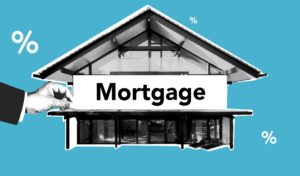
The gig economy has transformed the way many people work, offering flexibility and independence. However, gig workers and freelancers often face unique challenges when it comes to securing a mortgage. This blog explores the hurdles gig workers encounter and the strategies and programs available to help them achieve homeownership.
The Rise of the Gig Economy
The gig economy encompasses a wide range of freelance, contract, and part-time work. From rideshare drivers to freelance designers, gig workers enjoy the freedom to choose their projects and work schedules. However, this flexibility comes with financial unpredictability, which can complicate the mortgage application process.
Challenges Faced by Gig Workers
Income Variability: Unlike traditional employees with steady paychecks, gig workers often have fluctuating incomes. This variability can make it difficult for lenders to assess their financial stability and ability to repay a mortgage.
Documentation: Gig workers may lack the standard employment documentation that lenders typically require, such as T4 forms and pay stubs. Instead, they must rely on tax returns, bank statements, and contracts to prove their income.
Credit History: Maintaining a strong credit history is crucial for all borrowers, but it can be particularly challenging for gig workers who may experience periods of inconsistent income.
Strategies for Gig Workers
Despite these challenges, there are several strategies gig workers can employ to improve their chances of securing a mortgage:
Maintain Detailed Records: Keep thorough records of all income and expenses. This includes contracts, invoices, bank statements, and tax returns. Lenders will want to see at least two years of consistent income.
Build a Strong Credit Profile: Pay bills on time, reduce debt, and avoid taking on new credit before applying for a mortgage. A strong credit score can significantly improve your chances of approval.
Save for a Larger Down Payment: A larger down payment can reduce the lender’s risk and increase your chances of approval. Aim to save at least 20% of the home’s purchase price.
Consider a Co-Signer: If possible, having a co-signer with a stable income and strong credit can bolster your application.
Work with a Mortgage Broker: Mortgage brokers can help gig workers find lenders who are more flexible and experienced in dealing with non-traditional income sources. I have access to over 75 different lenders, from “traditional” banks, like TD and BMO, to private lenders.
Programs and Initiatives
Several programs and initiatives are designed to help gig workers and freelancers secure mortgages:
Self-Employed Mortgage Programs: Some lenders offer specialized mortgage programs tailored to self-employed individuals. These programs may have more flexible income verification requirements.
Bank Statement Loans: These loans allow borrowers to qualify based on bank statements rather than traditional income documentation. Lenders look at deposits over a certain period to assess income.
Conclusion
While securing a mortgage as a gig worker can be challenging, it is by no means impossible. By maintaining detailed financial records, building a strong credit profile, and exploring specialized mortgage programs, gig workers can navigate the home financing process successfully. With the right strategies and support, the dream of homeownership can become a reality for those in the gig economy.








